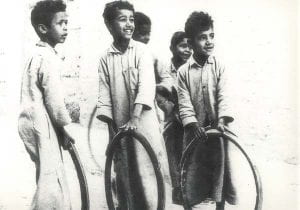I’ve begun to realize that I need to share my own experiences with self-doubt, lack of self-confidence, and negative self-talk as a model for others who might be experiencing the same thing and some ways to overcome it. I will start with two personal examples from my 65 years to help you reflect on their own life experiences which may be holding you back from existing in the present and having a more fulfilling life.
The first story happened when I was in high school. I was studying Spanish as my foreign language requirement and was quite fluent in reading and writing but didn’t have much opportunity to improve my speaking in class. There was a student exchange program that was available to students who excelled in their language classes. Students needed to apply for the opportunity to live with a host family and attend school for a year in a Spanish-speaking country. It sounded like a wonderful opportunity that is really a “once-in-a-lifetime kind of thing. I should have been excited about it, but I was petrified at the thought of leaving my secure home environment and venturing out into the world.
My negative self-talk took over:
What if I don’t get along with the family?
What if I’m not as good at Spanish as everyone thinks I am?
What if I don’t like the food or it doesn’t agree with me (I have a very sensitive stomach and I need to be careful what I eat).
What if I don’t do well in their school?
You get the idea and can see how I was getting in my own way. In fact, it is one of the biggest regrets I have in my life because I would have loved to learn more languages and traveled the world when I was younger. Unfortunately, I didn’t feel a sense of self-belonging and couldn’t imagine that I’d be strong enough to overcome any challenges I might have faced. Classmates who had the courage to participate returned after a year and were fluent in the target language and shared stories and photos of their adventures far from home. Truly a missed opportunity!
A second example of getting in my own way due to a lack of self-belonging happened whenever I was in a social situation while I was growing up. Meeting new people was painful for me because I felt awkward telling people about myself. Again my negative self-talk would take over:
Why would they be interested in anything I have to say?
What if they don’t like me?
What if I say something that offends them?
What if they’re just talking to me because they want me to do something for them or help them with something?
As a result, I had very few friends and those I did have, I worried that I might lose them at any moment if I messed up by saying or doing something they didn’t like.
By the time I was 35 years old, I was tired of being miserable and making everyone around me miserable. I was fed up with feeling lonely because I was afraid to get out of my comfort zone to make conversation with others. I was tired of hearing myself complain and then feeling guilty about burdening others with my troubles. My “aha” moment was the realization that I was the only person who could make a change; I had the ability to control how I reacted in different situations and whether my self-talk was negative or positive. Change doesn’t happen overnight but with a consistent and conscious effort on my part, I slowly began the process of pushing away self-doubt. I began to notice subtle changes in the way I felt when I was in social situations. I looked forward to meeting new people, getting to know them, and sharing my stories. I enjoyed traveling instead of worrying about planning every detail and then being disappointed because it didn’t go exactly as planned.
You might be wondering how I got started and what my process was like. Here are 5 things you can do right away to take the first steps towards changing how you think about your situation and how you respond.
- Make a mental or written list of accomplishments in your life. Think about how it/they make(s) you feel when you remember them. Savor those feelings and conjure them up when you feel yourself slipping back into self-doubt.
- What are your strengths/superpowers? What do you do well that other people ask your help for? Celebrate your superpowers and repeat the list to yourself when you begin feeling your confidence is slipping.
- What big emotions overwhelm you? Reflect on why they do. Make a pact to give yourself grace and try not to judge yourself harshly when you mess up.
- Think about a time that you did something spontaneously that turned out well in the end; something you didn’t plan or a change of plans that turned out better than what you had planned. Remind yourself that you don’t always have to be in control of every detail.
- Share your apprehension(s) about making these changes with someone you can confide in and trust, someone who won’t judge you, who will listen for understanding, and act as a mirror. If you don’t have someone in your life like that, reach out to me.
Remember that being aware of your lack of a sense of self-belonging is the first step to changing how you react and think. It’s the first step to better personal and professional relationships and well-being. My self-doubt pops into my head every now and then. It never goes away completely, but it does get better. For years I reminded myself about my “what if” moments that worked out and how I wasted my time worrying about them. Over time, your brain will begin to react on its own*. Give yourself grace while you’re working through it. Self-love is the greatest form of love there is.
*For a more in-depth explanation of the relationship between the reactions of your autonomic nervous system and why it’s important to be mindful of our reactions, listen to my podcast episode beginning on December 1st.
.


















